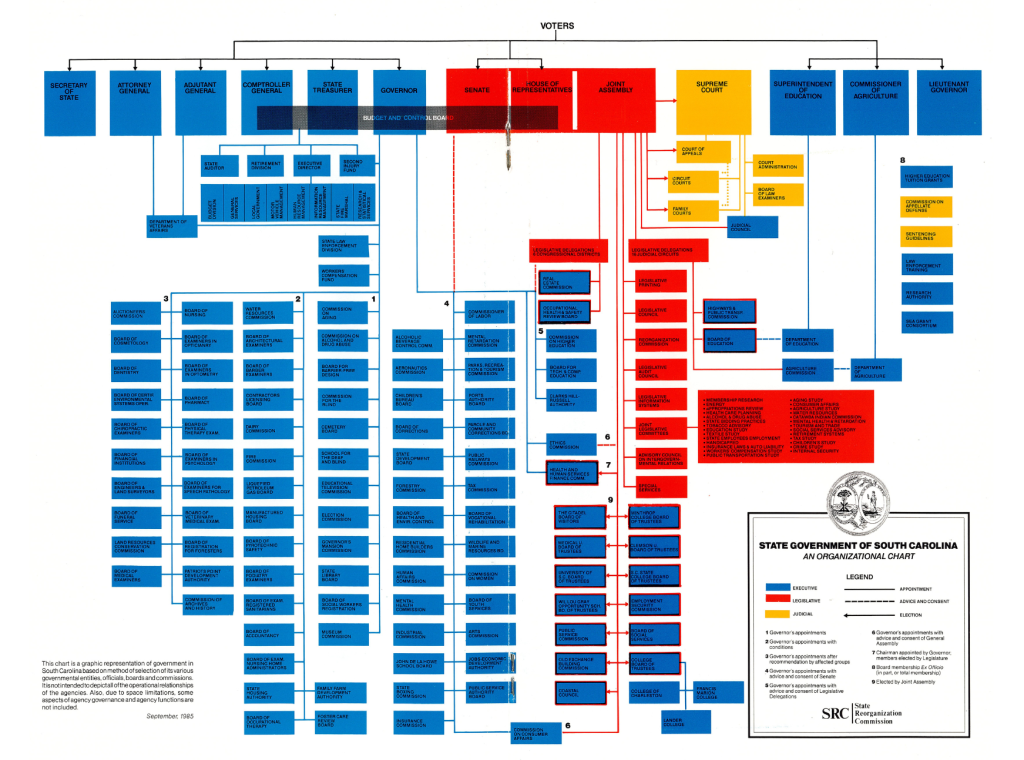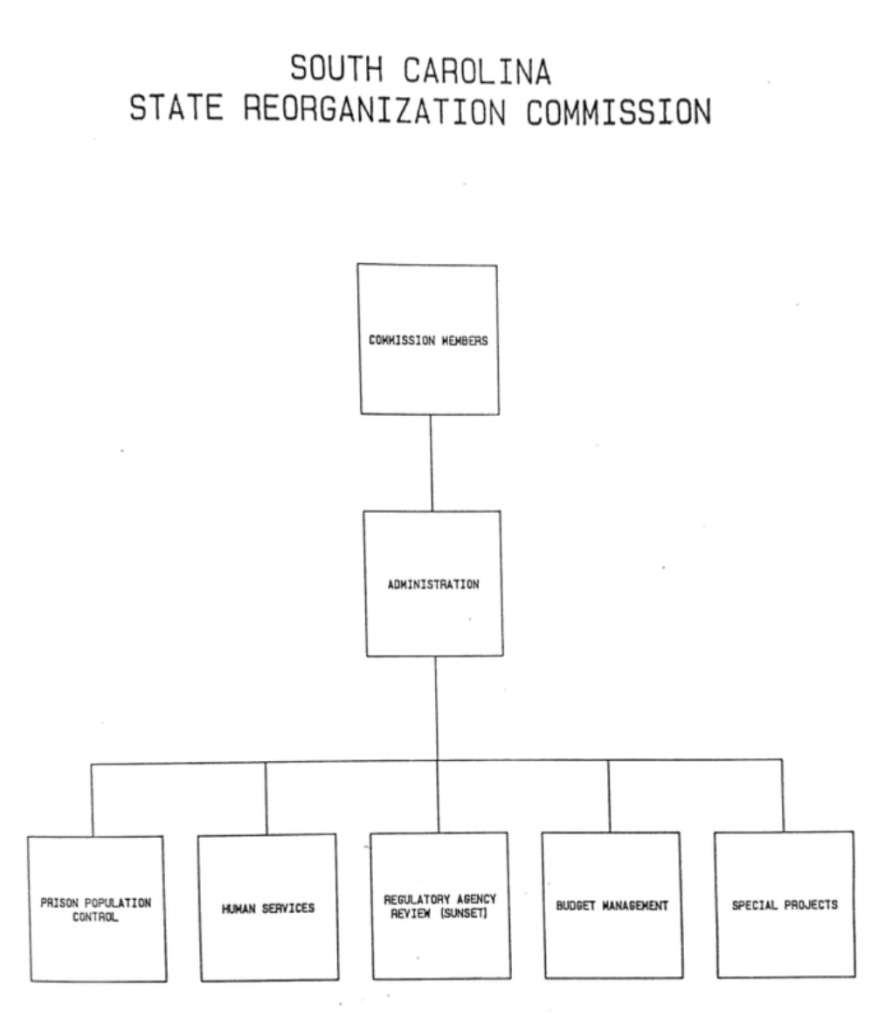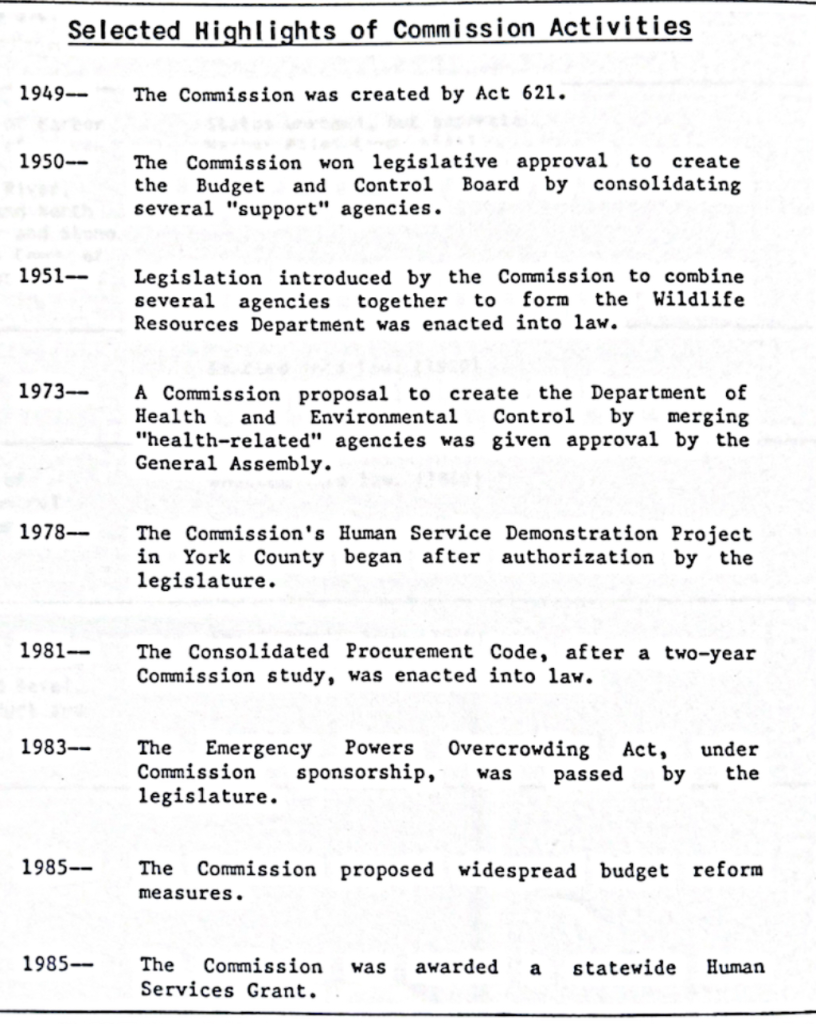A few changes recommended by the Reorganization Commission include:
- Combination of small agencies, creating State Budget and Control Board
- Merger of several agencies to create Wildlife Resource Commission
- Establishment of Central Purchasing Office
- Creating the Department of Health and Environmental Control
- Establishment of the Commission on Alcohol and Drug Abuse
- Development of performance measures for state agencies
- Administration of a sunset review process (a process by which agencies are reviewed to see if they are still necessary)
The Reorganization Commission’s work culminated in the State Government Restructuring Act under Governor Carroll Campbell’s administration in 1993.
Management, Accountability, and Performance Commission (MAP) (2003 – 2004)
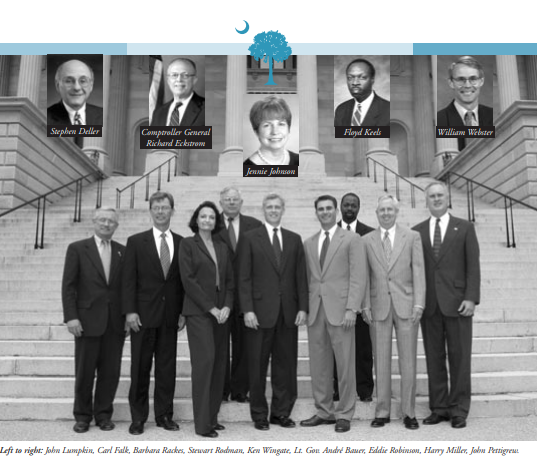
Members of the MAP Commission. Source: MAP Report (2003)
The Management, Accountability, and Performance Commission (MAP) began in June 2003. This commission was formed to meet the financial crisis that was arising across state governments and affecting South Carolina. Their specific goals included reducing costs, increasing accountability, eliminating duplication of effort, improving government’s effectiveness, focusing on outcomes/results, and meeting the needs of citizens.
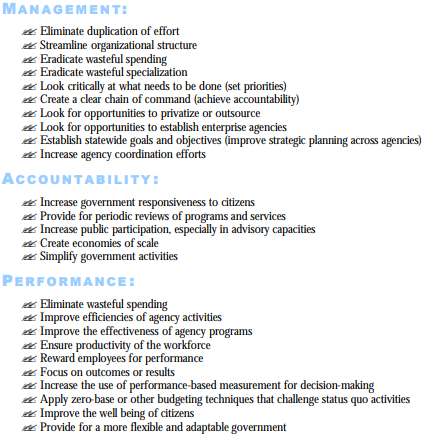
Source: MAP Report (2003)
This commission consisted of 12 individuals from the private sector and 2 constitutional officers (State’s Lieutenant Governor and Comptroller Governor). Over 30 staff members contributed time to the Commission. The Vice Chairman of the MAP Commission, Stu Rodman, is also the current vice chair of Palmetto Promise Institute!
The MAP Commission was no drive-by effort. It recommended a whopping 206 pages of ways to make the South Carolina government smaller and more efficient. A few recommended changes have since been made:
A few recommended changes that have since been done:
- The position of the Adjutant General changed from an elected office to an appointed office.
- Consolidation of state’s school districts (used to be 85 school districts).
- Eliminate the Second Injury Fund and fold residual functions into the Department of Insurance Cluster.
- Created the Department of Administration Cluster (DA)
There are also several MAP Commission proposals that have not yet seen legislative action but are currently being championed by Palmetto Promise in our Freedom Agenda, include:
- Amending state law to authorize a single cabinet secretary (Secretary of Health and Human Services) to oversee all health and human services agencies
- Consolidating the Department of Alcohol and other Drug Abuse Services and the inpatient addiction treatment services of the Vocational Rehabilitation within the Department of Mental Health
- Ensuring all local school boards receive appropriate training related to their position
“DOGE” Legislation in 2025
Currently, the House and Senate have their own versions of South Carolina DOGE Commission legislation. Here are some of the differences.
H.3334 – South Carolina Government Efficiency Act
H.3334, currently residing within the Judiciary Committee of the House of Representatives, creates a ‘South Carolina Efficiency Task Force’ that would develop recommendations for streamlining government agencies and operations. This committee would meet no later than June 2025 and every four years after. Their suggestions would be sent to the President of the Senator, the Speaker of House of Representatives, and the Governor.
This task force would be comprised of 15 members; five members from the Senate, five members of the House of Representatives, and five from the Governor. Members would be entitled to compensation.
S.318 – Commission on Fiscal Restraint and Government Efficiency
S.318, which recently received a hearing in the Senate’s Finance Committee, creates a commission that surveys the current structure and funding of our state government to find ways to modernize it. The commission should meet no later than October 1, 2025, and report its findings within a year.
This commission would be comprised of a total of 9 members; 3 members appointed by the President of the Senate, 3 members appointed by the Speaker of the House of Representatives, and 3 members appointed by the Governor. Members would serve without compensation.
The Future DOGE
South Carolina is ahead of the DOGE game with our long history of work on this front. We urge legislators to examine the work of the Reorganization Commission and MAP Commission and their recommendations on our current state organization. Many are still relevant today.
South Carolina should continue to move forward on this front, and that includes streamlining health functions across the state. Through the consolidating of our health agencies we can achieve greater efficiency, reduce bureaucratic hurdles, and provide more coordinated care. In his Testimony on S.2 to Reorganize SC Health Agencies, Dr. Oran P. Smith shared, “Following the division of DHEC into separate environmental and health agencies, the General Assembly, I believe here, is taking the next step by streamlining the health functions of three state agencies, S.2., which is consistent with all of those studies.” Those agencies are the Department of Mental Health, the Department of Disabilities and Special Needs, and the Department of Drug and Alcohol Abuse.
To read more about the consolidation needed in our health agencies, read “Agency Streamlining Still Needed; More Options in Play in 2025.”
The final report of the MAP Commission can be found here.
Information about the South Carolina State Reorganization Commission can be found here.








